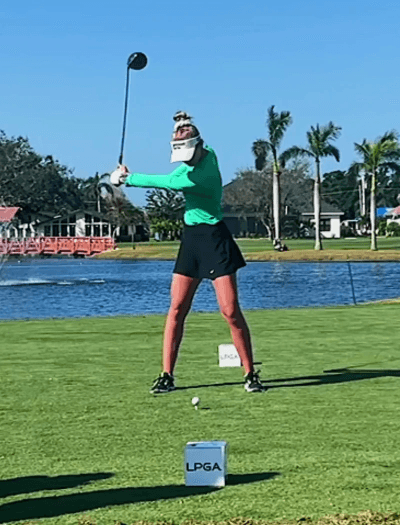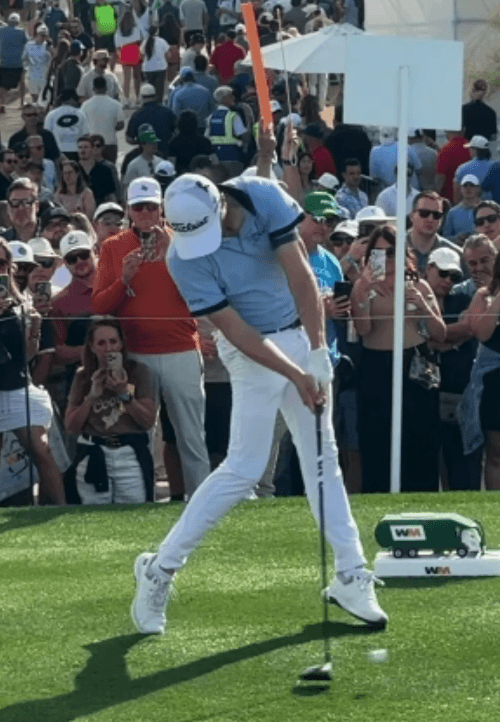It used to be said that a straight shot is the hardest shot in golf. Watch the average golfer, and it might seem true—they hit the ball anywhere but straight.
But that old saying doesn’t hold up anymore.
Today’s tour players are hitting straighter than ever before in golf history. If straight really was the hardest shot, why would professionals rely on it as their go-to? Wouldn’t it make more sense to play the easiest shot?
The Real Reason Pros Hit It Straight
The answer lies in technology. Club manufacturers today are producing the most forgiving, user-friendly equipment we’ve ever seen. That long-standing cliché—“straight is the hardest shot”—is outdated. Pros hit it straight because the modern swing and gear make it easier, more reliable, and more repeatable than curving the ball on purpose.
Here’s how you can do it, too.
1. Master the Square-to-Path Swing
You may have heard the phrase “square to path” thrown around, but what does it really mean?
A square-to-path swing keeps the clubface perpendicular to the swing path through the swing. In simpler terms: stop twisting the handle. When you torque the grip during your swing, the face twists and opens or closes relative to your path. That leads to inconsistent contact and big misses.
Let’s put this in perspective: if you swing fast enough to carry the ball 200 yards and your clubface is just 3 degrees open or closed relative to the path, your shot could end up 20 yards offline. Three degrees doesn’t seem like much—remember using a protractor in school? But at impact, small angles matter a lot.
Rather than trying to time face rotation, focus on eliminating it. Even a straight push or pull is better than hoping your timing lines up perfectly.
2. Train with the L-to-L Drill

The L-to-L drill is one of the first things I teach my students, and it’s consistently the biggest factor in helping them gain control of the clubface—and start hitting straight shots.
This drill has been around for nearly 100 years, originally taught by the great Bobby Jones, and it’s still a cornerstone of good swing mechanics.
Here’s how to do it:
In the backswing, when your lead arm is parallel to the ground, the shaft should form a 90-degree angle with your arm—creating an “L.” Nelly Korda sets this angle perfectly with the driver.
From a down-the-line view, the butt end of the club should point at, or just inside, the golf ball.
- Swing through the ball and mirror that position in your follow-through: trail arm parallel to the ground, club forming the second “L.”
- This movement grooves a balanced, rotational swing while keeping the clubface under control.
3. Improve Wrist Position at Impact
Watch any elite player at impact and you’ll see the same thing: a flat lead wrist, with the back of the hand facing the target just as Justin Thomas has done here.

That flat wrist isn’t just for show—it controls loft, face angle, and contact. And you can’t achieve it if you’re twisting the handle through the swing.
Here’s a simple drill to help:
Place a credit card halfway into the back of your glove.
At setup, your lead wrist will have a slight natural bend, causing the card to flex.
- As you swing to the first “L” position, flatten your wrist so the card straightens out.
Maintain that wrist condition through impact and into your follow-through “L.”
- The card gives you instant feedback. If it bends or pops out, your wrist is cupping or flipping through the ball—something we want to avoid for straight shots.
Make the Straight Shot Your Go-To
You now have the blueprint: eliminate handle twisting, train with the L-to-L drill, and lock in the correct wrist condition at impact. Straight shots aren’t just possible—they’re reliable when you understand how to produce them.
Want help mastering these techniques?
Book a lesson at Mark Rippy Golf and start making the straight shot your most trusted weapon on the course!
